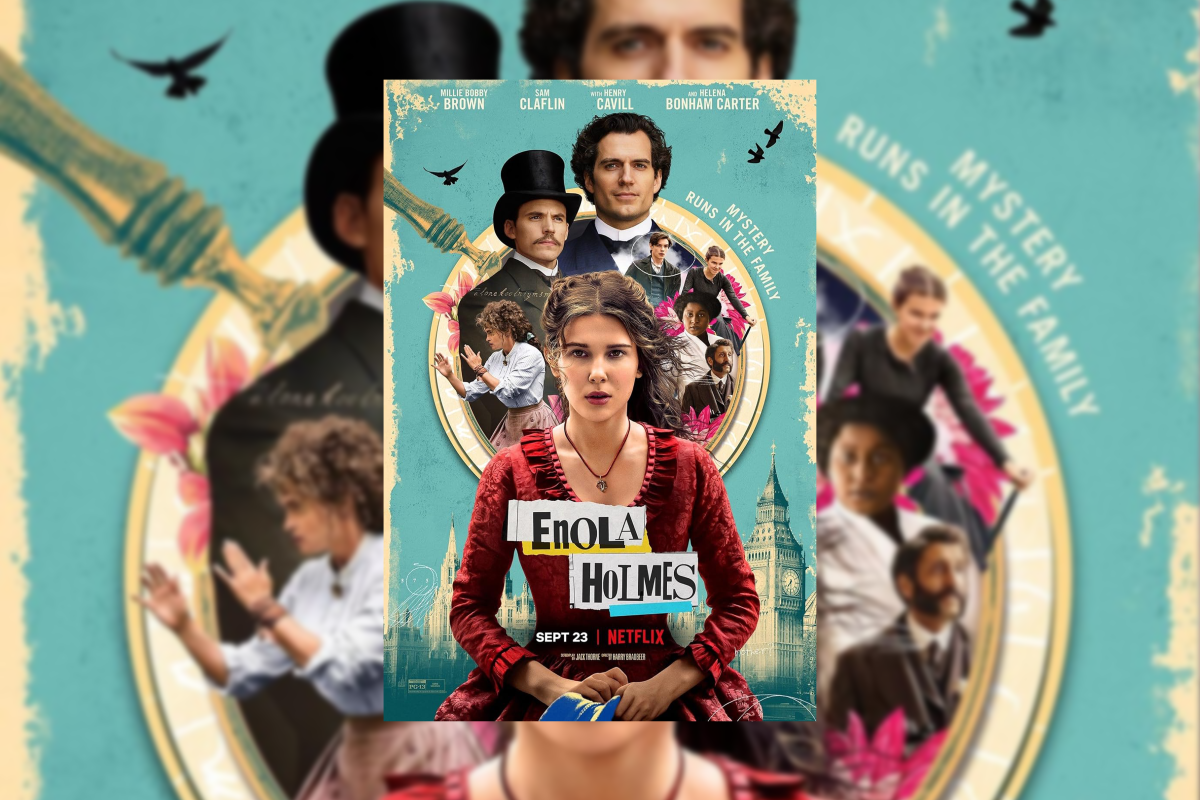Editor’s Note: This review contains spoilers.
Mystery, feminism, and murder—what more could you ask for from a film? Just last week, Netflix released “Enola Holmes,” and it was a hit in every aspect: the writing, the cast, and the storytelling. The movie never once felt boring or slow-paced. I laughed, I cried and I feared for the characters’ lives.
Enola Holmes is the sister of the famous Sherlock Holmes. With both of her older brothers out of the house, she has lived alone with her mother for most of her life. Her mother is not what one would call traditional in any sense—Enola was taught more about how to fight, play ping pong, and unscramble words than she was ever taught how to be “ladylike.”
The movie picks up as Enola wakes up on her 16th birthday to find her mother missing. She enlists the help of her older brothers, who then try to send her away to finish school. Expectedly, Enola does not agree with this plan. She runs away, and in trying to find her mother, ends up playing a part in a murder mystery.
The movie did an excellent job of making use of different storytelling elements. The added animation, flashbacks, and fourth-wall breaks added a uniqueness to the film that emphasized the eccentricity of the characters and the story as a whole. The incorporation of humor and mystery was both well-balanced and intriguing. The movie was able to weave moments of lightheartedness even in the most serious scenes, which made it all the more enjoyable.
The main character, Enola, has been criticized by some reviewers for being a lone protagonist. Unlike Sherlock, who has Watson by his side for most of his stories, Enola spends the majority of the movie without a partner in (solving) a crime. Some critics think that she needs that balance, but that would defeat a focal point of the movie: that being alone doesn’t mean you have to be lonely, and vice versa. The fact that Enola traveled alone for much of the film and solved her problems was a very good choice because it highlighted the feminist standpoint of the film.
I felt she was a very enjoyable character, one that the audience can grow attached to very quickly. This made all of her interactions with other characters, specifically with her love interest, especially entertaining. The addition of Sherlock Holmes was also interesting, and although he remained an important figure, it seemed to be a deliberate decision to have him not overshadow his sister.
There were a few things that could have been more powerful. For one, the reveal of the murderer toward the end. While it was surprising, I feel as though it could have been even better if it had been somehow woven into Enola’s story. Some of the original mystery of finding her mother was sidelined for an entirely different family, and it would have been interesting if they were somehow intertwined—perhaps if Sherlock, or even her mother, had been involved in the murder.
The resolution was also quite underwhelming, as the search for Enola’s mother seemed to be rushed when her mother happened to show up out of nowhere. There wasn’t much of an explanation as to why she left, and then she was gone again. However, this could be an attempt at setting up a sequel, as the director has stated they want to follow through on some of the sequels to the original Enola book.
Overall, “Enola Holmes” was an excellent movie. It can be enjoyed by all ages, and its PG-13 rating is just to account for some of the violence throughout the film. It is a fun, memorable movie that will leave you both satisfied and excited for more.
For questions/comments about this story, email [email protected] or tweet @TheWhitOnline.
























































































































































!["Working with [Dr. Lynch] is always a learning experience for me. She is a treasure,” said Thomas. - Staff Writer / Kacie Scibilia](https://thewhitonline.com/wp-content/uploads/2025/04/choir-1-1200x694.jpg)















































